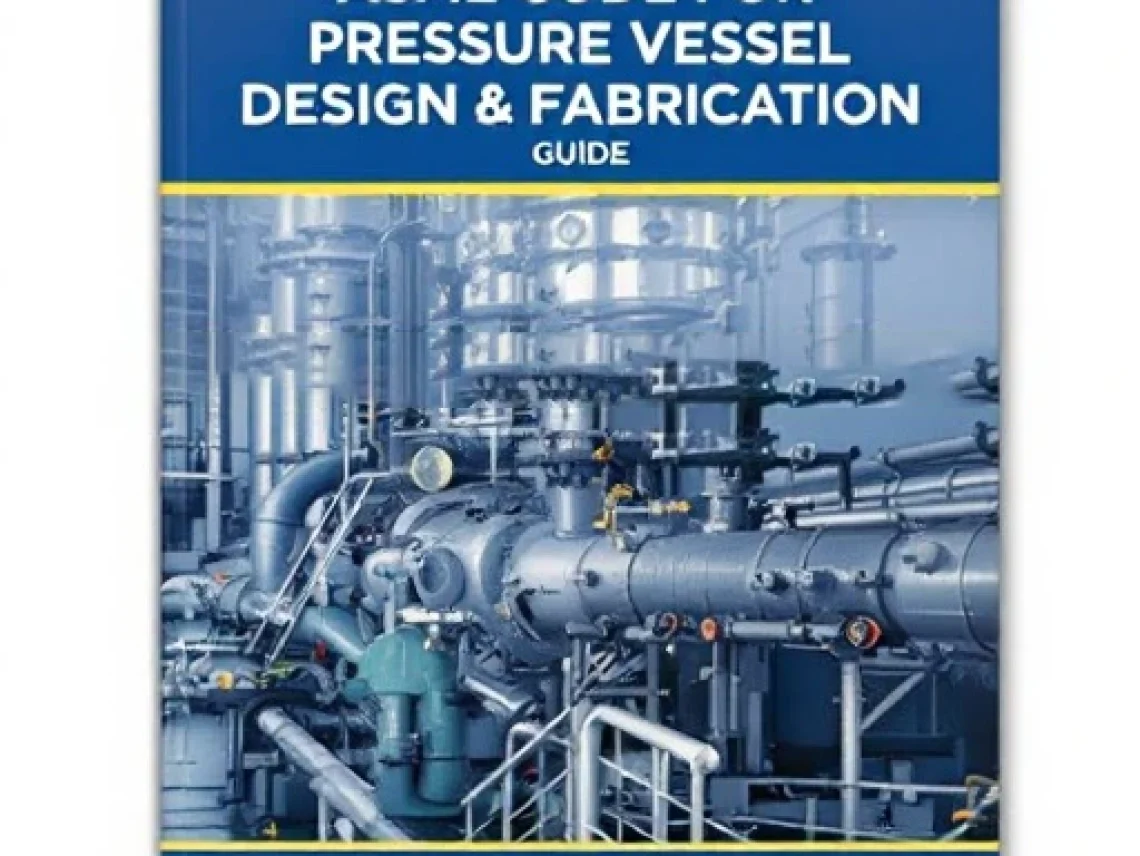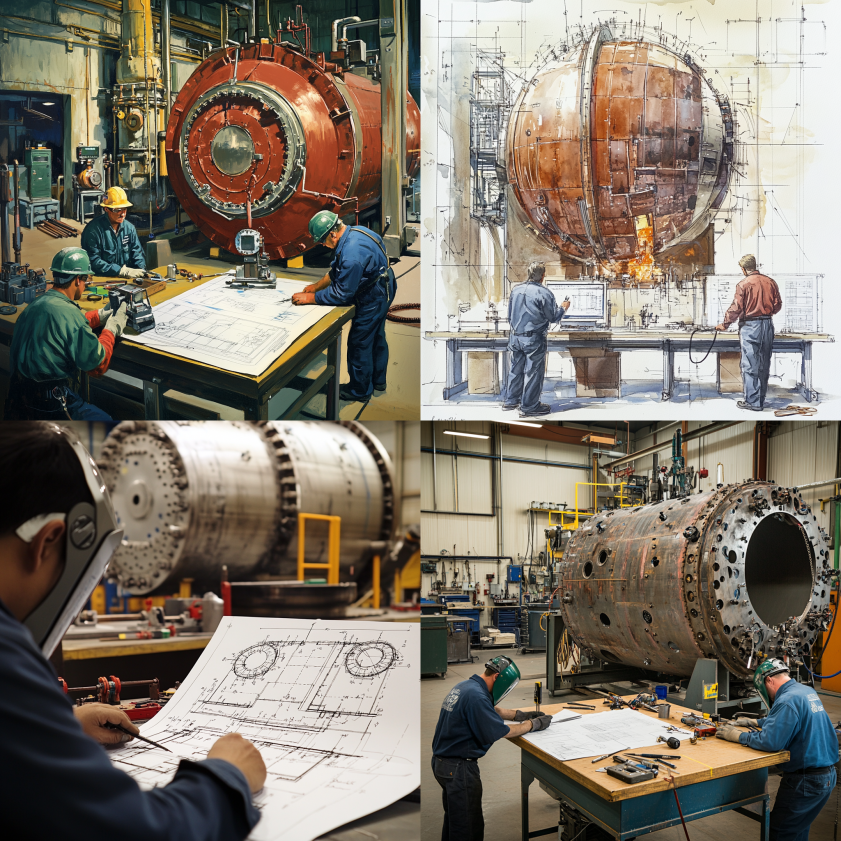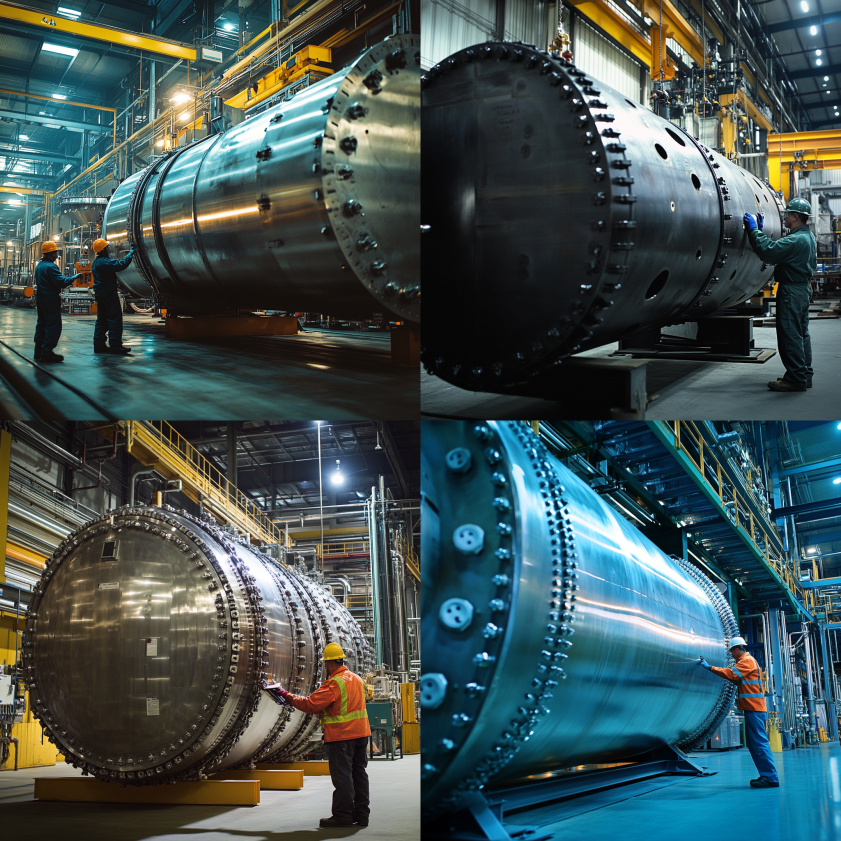ASME Pressure Vessel Code: What Governs Design and Fabrication

Table of Contents
ToggleWhy the ASME Pressure Vessel Code Matters
When it comes to pressure vessel design and manufacturing, no standard is more important than the ASME pressure vessel code. Created by the American Society of Mechanical Engineers, the ASME pressure vessel code outlines the safety, quality, and documentation requirements for building and maintaining these critical components.
Introduction to the ASME Pressure Vessel Code
The ASME pressure vessel code—formally known as the ASME Boiler and Pressure Vessel Code (BPVC)—sets the industry benchmark for safety and performance. It provides the rules and design criteria used worldwide for pressure vessel construction.
Whether you’re working in oil and gas, pharmaceuticals, power generation, or chemical processing, the ASME pressure vessel code ensures that all vessels meet consistent, high-level engineering and safety standards.
Key Sections of the ASME Pressure Vessel Code
Section VIII of the ASME pressure vessel code is the most commonly applied part and is divided into three divisions:
- Division 1: General rules for most vessels
- Division 2: Alternative rules with more detailed design analysis
- Division 3: Covers high-pressure vessels exceeding 10,000 psi
Understanding which section of the ASME pressure vessel code applies depends on the operating pressure, fluid type, and intended use.
Compliance and Certification
Following the ASME pressure vessel code isn’t just good practice—it’s often legally required. Many U.S. states and international jurisdictions mandate ASME certification for vessels used in commercial or industrial applications.
ASME-certified vessels carry the U-stamp or other markings that confirm compliance with code requirements, including:
- Design documentation
- Material traceability
- Welding procedures
- Non-destructive testing
- Hydrostatic testing
Trust the ASME Pressure Vessel Code
For anyone involved in vessel design, fabrication, or inspection, understanding the ASME pressure vessel code is non-negotiable. It ensures that your equipment meets safety and performance standards, protects workers, and minimizes legal risks.
Whether you’re sourcing a new vessel or reviewing compliance on existing systems, rely on the ASME pressure vessel code to guide your decisions.
The Primary ASME Code for Pressure Vessels

The heart of the matter lies in ASME Section VIII of the BPVC, which is dedicated entirely to pressure vessel design and fabrication. This section outlines the rules and calculations necessary to build pressure vessels capable of withstanding internal or external pressure without failure.
Section VIII is subdivided into three divisions, each catering to different pressure ratings and complexity levels:
Division 1: General Use
- Most commonly used division
- Relatively straightforward design rules
- Ideal for standard pressure ranges (typically below 3,000 psi)
- Relies on conservative design margins
Division 2: Alternative Rules
- Intended for vessels that operate under higher pressures and require more efficient use of materials
- Offers more precise analysis and less conservative safety margins
- Suitable for moderate- to high-pressure applications
- Requires more thorough testing and documentation
Division 3: High-Pressure Vessels
- Covers pressure vessels exceeding 10,000 psi (69 MPa)
- Used in specialized industries like nuclear power or ultra-high-pressure applications
- Demands the highest level of engineering rigor and documentation
Understanding which division your project falls under is crucial. Mistakes in this early stage can lead to code violations, compromised safety, and costly redesigns.
For a comprehensive look at each division, the ASME official site is a reliable resource.
Key Requirements Covered in ASME Section VIII
Section VIII provides an extensive set of rules that touch on nearly every aspect of pressure vessel construction. These include:
1. Design Considerations
Design calculations must account for:
- Maximum allowable working pressure (MAWP)
- Material stress limits
- Shell and head geometries
- Joint efficiency
- Corrosion allowance
These factors ensure that the vessel can withstand both operating and test conditions without deformation or rupture.
2. Material Selection
Materials must be ASME-approved and suitable for the intended service temperature and pressure. Choices include:
- Carbon steel
- Stainless steel
- Nickel alloys
- Hastelloy and Inconel for corrosive environments
All materials must be traceable and come with mill certifications.
3. Fabrication and Welding
Welding processes must meet ASME’s stringent requirements. This includes:
- Welding procedure specifications (WPS)
- Welder performance qualifications
- Joint configuration standards
Welds must be inspected using non-destructive testing (NDT) methods like radiographic (RT) or ultrasonic (UT) inspection.
4. Inspection and Testing
Before certification, vessels must undergo rigorous inspections:
- Hydrostatic testing (typically 1.3 times MAWP)
- Visual inspections
- Dimensional checks
Only after passing these tests can a vessel receive the coveted ASME “U” stamp.
5. Documentation and Traceability
Full documentation must accompany each vessel, including:
- Design drawings
- Material test reports
- Welding logs
- Inspection reports
This ensures long-term traceability and regulatory compliance.
Why Adhering to ASME Codes Matters

1. Safety
At its core, ASME is about preventing catastrophic failure. A ruptured pressure vessel can release energy equivalent to that of a small bomb. Following ASME codes mitigates this risk by enforcing robust design and manufacturing protocols.
2. Legal Compliance
Many jurisdictions mandate ASME compliance for operating pressure vessels. Ignoring the code could lead to:
- Fines or shutdowns
- Legal liabilities in the event of accidents
- Denial of insurance claims
3. Market Acceptance
ASME-stamped vessels are recognized globally. Whether you’re supplying to a U.S. refinery or an overseas chemical plant, the ASME label carries weight.
4. Long-Term Reliability
Pressure vessels built to ASME standards are more likely to withstand:
- Cyclic loading
- Harsh environmental conditions
- Long service lives
This means fewer repairs, reduced downtime, and lower lifecycle costs.
Wrapping It Up: Understanding ASME Code for Pressure Vessels
Choosing the right ASME code for pressure vessel design is not just a box-checking exercise. It’s a foundational decision that shapes the safety, performance, and reliability of your equipment.
ASME Section VIII, across its Divisions 1, 2, and 3, provides a comprehensive framework for building pressure vessels that meet the highest standards of safety and efficiency. By understanding these divisions and their unique requirements, engineers and facility managers can confidently move forward with projects that meet both operational demands and regulatory obligations.
To ensure your pressure vessel project meets the mark, working with a qualified partner who understands the nuances of ASME compliance is essential.
Need a reliable partner?
Red River specializes in the design and manufacturing of pressure vessels. We also fabricate related items such as prefabricated spools and skid packages.
Reach out to us today and experience the Red River difference. Where American-made products and American Values come together, we care more.
Frequently Asked Questions (FAQs) About Pressure Vessels
1.What is the ASME code for pressure vessels?
The primary ASME code used is Section VIII of the Boiler and Pressure Vessel Code, which governs all aspects of pressure vessel design, fabrication, and inspection.
2.What is the difference between ASME Section VIII Divisions 1, 2, and 3?
- Division 1: Most commonly used for standard pressure ranges
- Division 2: Allows for more refined design with less conservative margins
- Division 3: Tailored for high-pressure vessels above 10,000 psi
3.Is ASME code mandatory?
In many states and industries, yes. Even when it’s not legally required, it is often a contractual or insurance prerequisite.
4.How do I know which ASME Division to use?
It depends on factors like pressure levels, material efficiency needs, and application complexity. Consult an ASME-certified engineer for guidance.
5.What are typical design pressures considered in ASME Section VIII?
Design pressure varies by application but must always exceed the vessel’s maximum expected operating pressure with a safety margin.
6.Who is authorized to fabricate ASME pressure vessels?
Only manufacturers with a valid ASME “U” stamp can fabricate Section VIII-compliant pressure vessels.
7.Can a non-ASME vessel be retrofitted to become compliant?
Generally, no. Vessels must be designed and built to ASME standards from the start. Retrofitting may require a complete rebuild.
8.How often is the ASME BPVC updated?
The ASME BPVC is typically revised every two years to reflect the latest industry practices and safety data.
Key Takeaways
- ASME Section VIII is the standard code for pressure vessel design and fabrication.
- The code includes three divisions tailored to different pressure levels and applications.
- Compliance ensures safety, legal validity, and market acceptance.
- Design covers materials, stress analysis, welding, and testing protocols.
- Only ASME “U” stamp holders are authorized to build certified vessels.
- Partnering with experienced manufacturers like Red River guarantees compliance and peace of mind.
Table of Contents
ToggleRelated Blog Post
- Why are pressure vessels spherical?
- Why are pressure vessels cylindrical in shape?
- What is the fabrication work of pressure vessel?
- Why do pressure vessels have a hemispherical ends?
- What are the six case histories of pressure vessel failures?
- What is a good source of information for the design of pressure vessels?
Solutions
In the realm of industrial solutions, Red River emerges as a pioneer, offering a diverse range of custom-engineered products and facilities. Among our specialties is the design and production of Custom/OEM Pressure Vessels, meticulously crafted to meet individual client requirements, ensuring performance under various pressure conditions. Our expertise extends to the domain of prefabrication, where Red River leads with distinction.
The company excels in creating prefabricated facilities, modules, and packages, reinforcing its stance as a forerunner in innovation and quality. This proficiency is further mirrored in their Modular Skids offering, where they provide an array of Modular Fabricated Skid Packages and Packaged equipment. Each piece is tailored to client specifications, underlining their commitment to delivering precision and excellence in every project they undertake.
